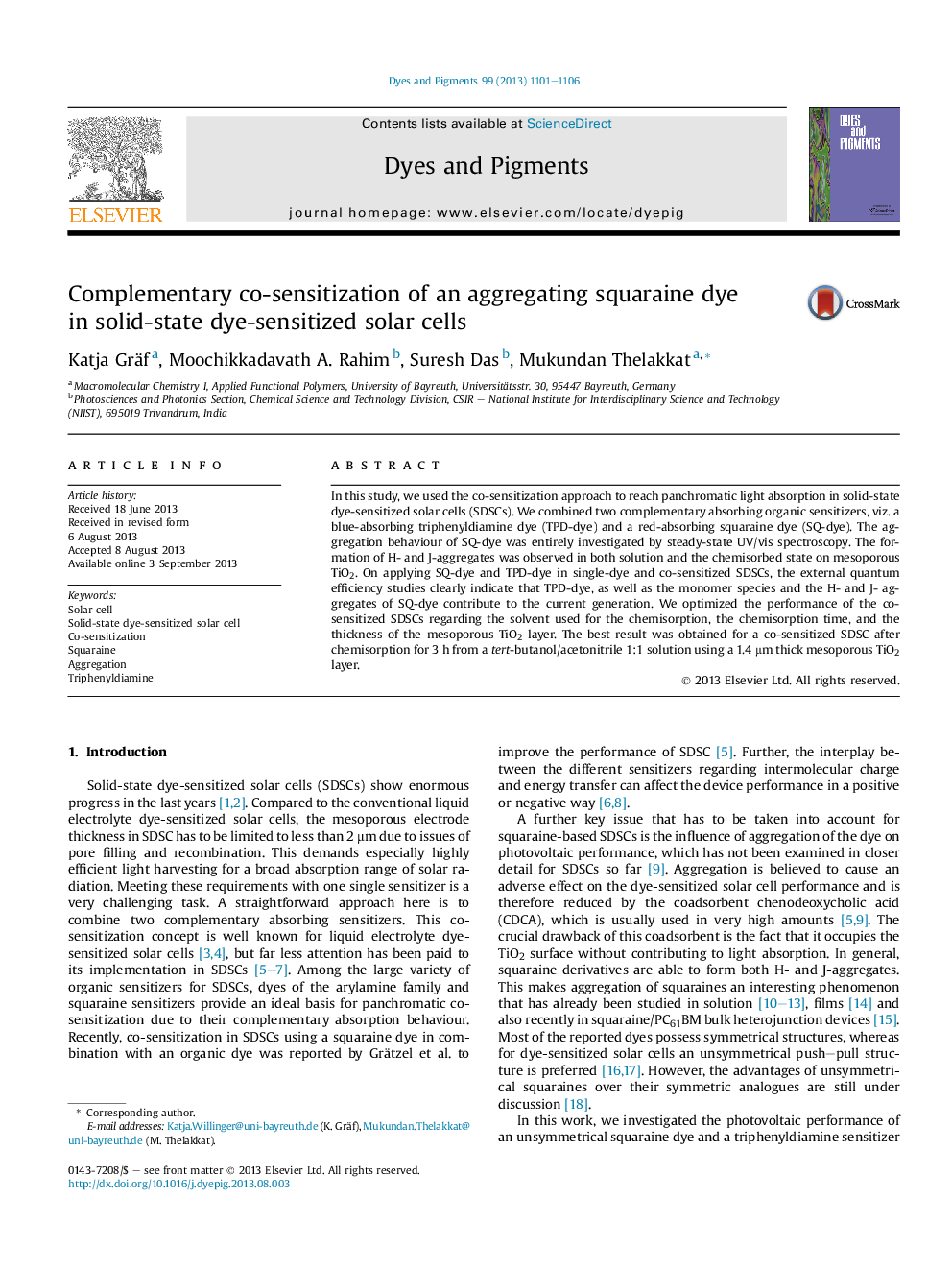| Article ID | Journal | Published Year | Pages | File Type |
|---|---|---|---|---|
| 176408 | Dyes and Pigments | 2013 | 6 Pages |
•We synthesised an unsymmetrical squaraine dye and a triphenyldiamine dye.•The sensitizers feature complementary absorption profiles.•We investigated the aggregation of the squaraine in solution and as adsorbed on TiO2.•The cosensitized solid-state dye-sensitized solar cells show superior efficiencies.•The monomer and H- and J-aggregate species of the squaraine contribute to the EQE.
In this study, we used the co-sensitization approach to reach panchromatic light absorption in solid-state dye-sensitized solar cells (SDSCs). We combined two complementary absorbing organic sensitizers, viz. a blue-absorbing triphenyldiamine dye (TPD-dye) and a red-absorbing squaraine dye (SQ-dye). The aggregation behaviour of SQ-dye was entirely investigated by steady-state UV/vis spectroscopy. The formation of H- and J-aggregates was observed in both solution and the chemisorbed state on mesoporous TiO2. On applying SQ-dye and TPD-dye in single-dye and co-sensitized SDSCs, the external quantum efficiency studies clearly indicate that TPD-dye, as well as the monomer species and the H- and J- aggregates of SQ-dye contribute to the current generation. We optimized the performance of the co-sensitized SDSCs regarding the solvent used for the chemisorption, the chemisorption time, and the thickness of the mesoporous TiO2 layer. The best result was obtained for a co-sensitized SDSC after chemisorption for 3 h from a tert-butanol/acetonitrile 1:1 solution using a 1.4 μm thick mesoporous TiO2 layer.
Graphical abstractFigure optionsDownload full-size imageDownload as PowerPoint slide
